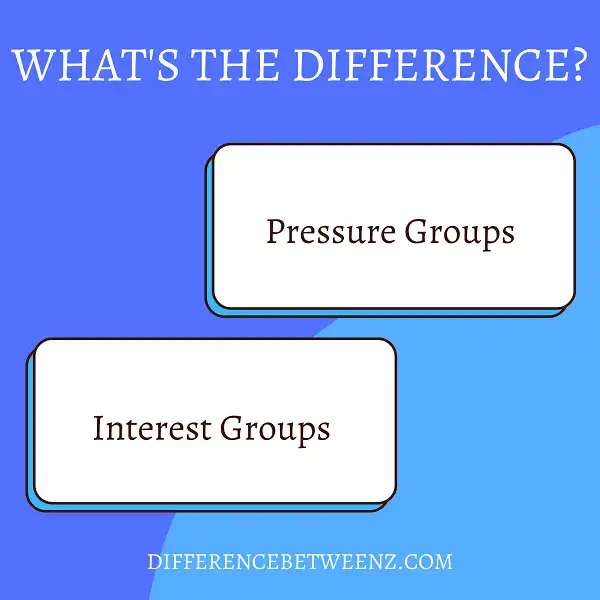Politics can be a complicated and daunting topic, but it’s fascinating when you break it down into its smaller pieces. In this blog post, we’re going to explore the differences between pressure groups and interest groups. Both play an important role in politics, but they serve different functions. So, what are the differences between pressure groups and interest groups? Let’s take a closer look.
What are Pressure Groups?
Pressure groups are organizations that try to influence government policy. They do this by lobbying decision-makers, organizing rallies and protests, and conducting public awareness campaigns. Pressure groups can be found in every country and on every issue, from environmentalism to gun control.
In some cases, pressure groups are able to exert a great deal of influence on government policy. In other cases, their impact is more limited. Pressure groups play an important role in the political arena by ensuring that the voices of ordinary citizens are heard by those in power.
What are Interest Groups?
Interest groups are organizations that seek to influence public policy by advocating for the passage of laws that will benefit their members. Interest groups vary widely in their size, scope, and agenda, but all share a common goal of using the political process to further their own interests.
- Interest groups play an important role in the political arena by providing information and resources to elected officials, mobilizing voters, and engaging in lobbying activities.
- Interest groups can also have a profound impact on elections by endorsing candidates and spending money on advertising and campaign activities.
- In recent years, the rise of social media has given interest groups a new platform for promoting their agendas and engaging with policymakers. As interest groups continue to evolve, they will remain a central force in the American political process.
Differences between Pressure Groups and Interest Groups
Pressure groups and interest groups are both important players in the political arena, but they operate in different ways.
- Pressure groups are typically more narrowly focused than interest groups, and they seek to influence specific policy decisions. For example, a pressure group might lobby for stricter gun control laws or for increased funding for environmental protection.
- Pressure groups often have less formal structures than interest groups, and they may not have official membership requirements. Interest groups, on the other hand, are broader in scope and typically seek to promote a particular cause or ideology.
- For instance, an interest group might work to advance the rights of women or minorities. Interest groups usually have more formal structures than pressure groups, and they often require members to pay dues or participate in activities.
Although they operate in different ways, both pressure groups and interest groups play an important role in the political process.
Conclusion
The main difference between pressure groups and interest groups is that pressure groups use tactics such as violence or the threat of violence to get their message across, while interest groups use more peaceful methods such as lobbying and campaigning.
Pressure groups are often seen as less legitimate than interest groups because of their violent tactics, but they can be very effective in getting their message heard. It’s important to understand the differences between these two types of groups so you can choose which one is right for your cause.


